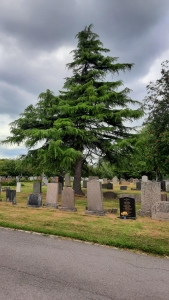Celebrant Training UK: The Varied Roles of a Heart-led Celebrant
There are so many aspects to the role of a Heart-led Celebrant. Let’s have a look at a few of them.
At one level, it can be divided into:
Our ability to give direction.
Our ability to take direction.
We create, write and officiate beautiful, personalised ceremonies based on what is meaningful to our clients rather than our own belief system.
We craft and curate ceremonies within our community and further afield. Our 20 to 30 minutes in front of an audience is such a small part of what we do.
Firstly, we attract clients. It is all ‘energy’ in action, and may happen through word of mouth, blogs, social media, advertisements and so on.
There may be an initial meeting to determine whether the relationship will continue.
Upon booking, the path to ceremony looks like this.
Listening.
Listening.
Listening.
While many celebrants come to this role because they ‘love to be the centre of attention’, need an audience, adore public speaking, were born to be in the limelight, I am hesitant about training students who have this as their motivation. Why? Because it’s NOT about us.
Heart-led Celebrants
understand that it’s our job
to shine the light
on our client.
Developing excellent listening skills, whereby we listen deeply without the need to interject with our own thoughts and stories, is at the heart of our role.
We create and we craft. It is part of our role to be learning constantly and developing and refining our various skills. If we ever think we know everything, it’s probably time to hang up the celebrancy hat.
Creating a ceremony is a different process to writing a ceremony. We are at once creator, dreamer, writer, performer, producer and director. It’s not just a matter of putting words upon the page, but also considering the choreography of our rituals, how will the audience see/hear/feel our ceremony, and considering the ceremonial space we’re in.
We communicate with our client in various ways (in person, Zoom, email, phone) to ensure that we’re meeting their brief for the ceremony. And then the time comes when we pass the script over to the client on the understanding that ‘it is their ceremony’ and that we welcome feedback and any suggestions for amendments, additions or deletions.
Whether it’s approved without the need for changes or you have to work your way through several drafts, once it is finally approved there’s still more work to do.
Now you have to become familiar with the script. Rehearsing it many times ensures three things:
. You’re at one with the script
. You’ve road tested the language used. Do the words come easily out of your mouth? Is there anything tripping you up? Do the sentences make sense?
I go through each script about 20 times. I’m aware of celebrants who don’t even read their scripts out loud once.
. The more familiar the script becomes, the less you’ll sound like you’re reading it because you will have discovered the lay of the land and infused it with authentic emotion.
And then comes the day of the ceremony. Personally, I always get to the venue early. If it’s the crematorium or burial ground, I aim to be there about 40 minutes before. And for weddings, generally an hour before (longer if it’s further away than normal).
I then do some conscious breathing, whereby I breathe in desired feelings: peace, calm, relaxation.
If I’m in a place where I am setting up a ceremonial space, such as with an altar or memory table, I do that. There’s plenty of time for a sound check too.
I ask the Universal Energy to make me an instrument of peace and of love.
And then comes the time where all that work I’ve done is delivered into a short amount of time. Hopefully it is with flair, grace, care, creativity, and always with integrity. It’s a time of heightened emotion, and a lot of pressure. It has to be right!
It’s not dissimilar to creating a movie. It might take four years to make, and it’s watched in two hours.
Ceremony creation takes many hours in one form or another. Weddings can take 20 to 30 hours of time. Funerals 10 to 15 hours on average.
The role of a Heart-led Celebrant is one infused with devotion, dedication, responsibility, creativity and love.
Veronika Robinson has been a celebrant for 27 years. Along with her husband, Paul Robinson, voice and presentation coach, she’s co-founder and co-tutor at Heart-led Celebrants, a dynamic movement of certified celebrants; and is also editor of The Celebrant magazine.



















